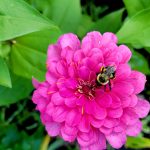A workshop used for mummification in Saqqara, Egypt, contains remnants of the materials used to make the mummies, much of which was revealed to have come from southern Africa or Southeast Asia.
human
February 1, 2023
Illustration of an underground embalming workshop in Saqqara, ancient Egypt Nikola Nevenov
An underground workshop found in an ancient Egyptian burial ground contains ceramic vessels containing traces of materials used to make mummies. They contain resins obtained from as far away as India and Southeast Asia, indicating that ancient Egyptians engaged in long-distance trade.
Maxime Rageot of the University of Tübingen, Germany, said: “There was very little available locally.”
A workshop dating back to around 600 BC was discovered in 2016 in Saqqara, the burial place of Egyptian royalty and elite for centuries. “It has been used as an elite cemetery since the earliest moments of the Egyptian state,” says Elaine Sullivan of the University of California, Santa Cruz.
Near the Pyramid of Unas, archaeologists led by Ramadan Hussein, also of the University of Tübingen, have discovered two vertical shafts dug into the ground. One was 13 meters deep and led to his embalming workshop, while the other was 30 meters deep and led to the burial chamber. Hussein died in 2022.
Susanne Beck, a team member at the University of Tübingen, says this is the first Egyptian embalming workshop found underground. This may have been to keep the process secret, but it also had the advantage of keeping the decaying body cool.
At the workshop, the team found 121 beakers and bowls. Many were labeled. Sometimes it had instructions such as “put on his head”, sometimes the name of the antiseptic, sometimes the title of administrator.
Vessel in embalming workshop © Saqqara Saite Tombs Project, University of Tübingen, Tübingen, Germany.
The researchers chose 9 beakers and 22 bowls with the most legible labels for analysis. They examined the chemical residue left in the bowl to see what substances were used during embalming and mummification.
Many substances were found, including vegetable oils, tar, resins, and animal fats. Two examples were cedar oil and heated beeswax. Many of the substances were known to be used in mummification, but some were new.
One new substance was dammar, a gum-like resin obtained from trees in India and Southeast Asia.
The team also found Elemi. Elemi is a pale yellow, honey-like resin that comes from trees in the rainforests of South Asia and southern Africa.
Philipp Stockhammer of the Ludwig-Maximilians-University in Munich, Germany, says Damar and Elemi show that Egyptian embalming facilitated early globalization. “There was really a need to transport these resins long distances.” This is consistent with other evidence of long-distance trade at the time.
Ancient Egyptian elites were as fond of exotic goods as modern capitalists, Sullivan says. In an era when nations were powerful and organized, “we have a great interest in connecting with the outside world and in collecting those things from the outside world.”
Both Stockhammer and Sullivan say the material was carried by a series of traders. “Egyptians themselves don’t need to go to the eastern side of India,” says Sullivan.
The researchers were also able to translate two new words. Many texts on mummification are ancient times When CephetThe former was tentatively translated as “myrrh” or “incense” and the latter as “sacred oil”. However, they could be identified because they were written on a piece of pottery with residue inside.it turns out ancient times It is a mixture of coniferous oils or tars. in the meantime, Cephet It is an ointment – an ointment or a lubricant – with herbal additives.
Many of the substances possessed antibacterial and antifungal properties and were combined into elaborate mixtures. It indicates a “general knowledge”.
This is consistent with textual evidence that the priest charged with embalming was an important figure with considerable skill, Sullivan says. “They would have had to have a lot of ritual knowledge and a lot of material knowledge,” she says. It had to be done. It was a “spiritual and physical practice.”
More on these topics:










